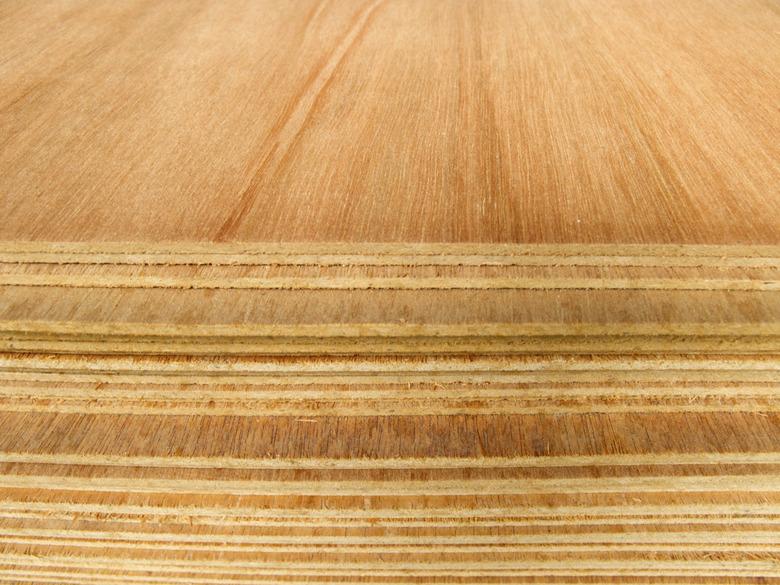What Is The Difference Between B-C & A-C Plywood?
The Hardwood Plywood and Veneer Association established the grading standards for plywood in the United States. These standards, although voluntary, are accepted universally for uniform colors, grain, size and number of defects in the face of the plywood. The grading system applies across the board — from softwood to hardwood plywood.
The Report Card
The Report Card
Plywood grading typically refers to the veneer of the plywood. The letter A represents prime, top-quality wood. It's consistent in color, grain and appearance. The letter B is similar to grade A but allows small variations such as burls, knots and streaks. The letter C represents obvious defects, patches and color variations. The grading system is in place mostly for aesthetics, but it also refers to core layers, voids and manufacturing issues that might go unnoticed.
Premium or Inconsistent
Plywood typically displays two grades, one for each side of the plywood. Common practice is to manufacture plywood with one good side and one side with lower quality. Plywood graded A-C has one premium side and one side with visible defects, streaks and or knots. A-C plywood is perfect for cabinet doors and jambs, architectural shelving and all-purpose woodworking. The A side is consistent and defect-free. The C side has inconsistencies such as color variations, knots, burls, swirls and streaks that are hidden on the back of a door, on the inside of a cabinet or underneath a shelf.
Structurally Alike
Structurally Alike
B-C plywood is cheaper than A-C plywood. The B-face of the plywood has fairly even color and allowable inconsistencies, which, for the most part, can be cut out of the plywood if desired. A-C plywood might look better, but B-C plywood is structurally no different than A-C, and can be used anywhere you would normally use A-C.
Cost Comparisons
Cost Comparisons
Plywood graded B-C is more affordable than A-C or A-B. The B side becomes the prominent face, with a few visible defects and color variations or streaks. The C side or back has obvious defects that can be placed inside or on the backs of doors. Saving money is typically the reason why you would choose B-C over A-C plywood.
The Lowest Grade
The Lowest Grade
Shop-grade is the lowest grade of plywood available and the most affordable. It has visible defects on both sides. It may also have inconsistencies in length, width and thickness. Shop-grade plywood, for all its defects, is up to 85 percent usable. It's possible to purchase shop-grade plywood, cut around the defects and save significant money over A-B, A-C or B-C.
What You Really Need
What You Really Need
Determining what you need is important. Prime-quality plywood is consistent, but some consider it plain. Lower-grade plywood can save you money and add character to your project. For example, knotty-pine or alder plywood is full of knots and is considered distinctive. Birch plywood, full of swirls, streaks and radical patterns, is one of the most affordable plywood options, and it may go better with your favored decor.
